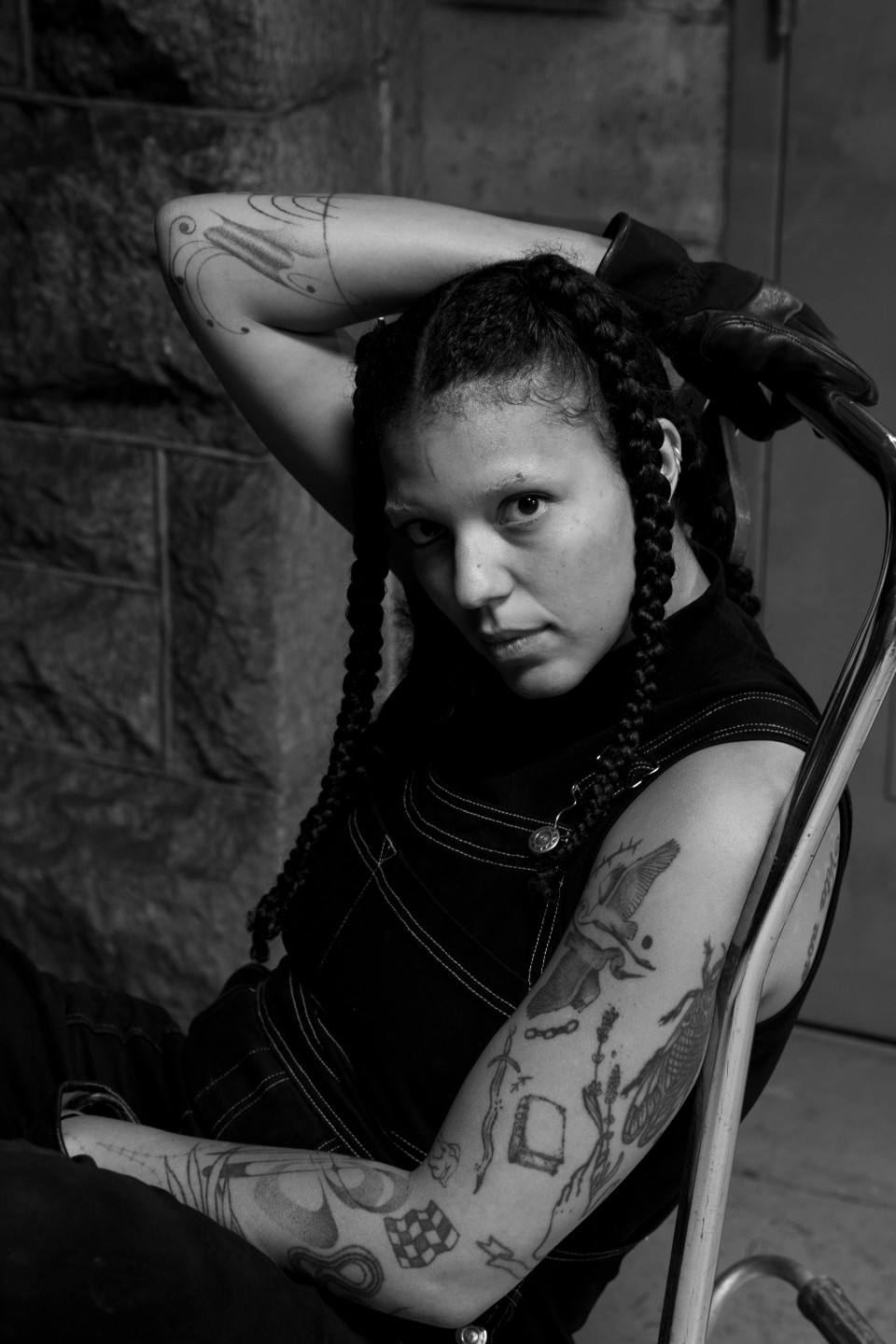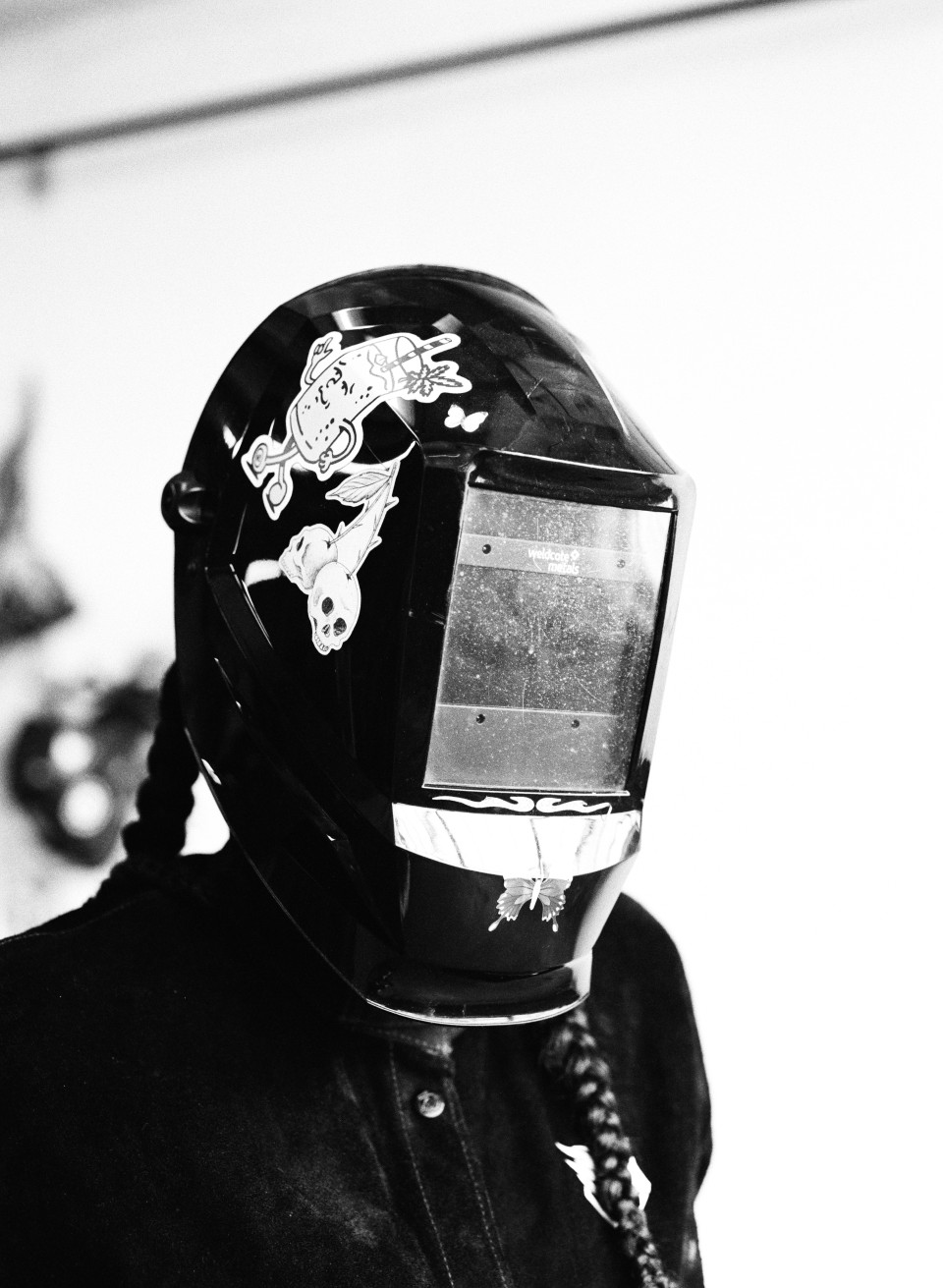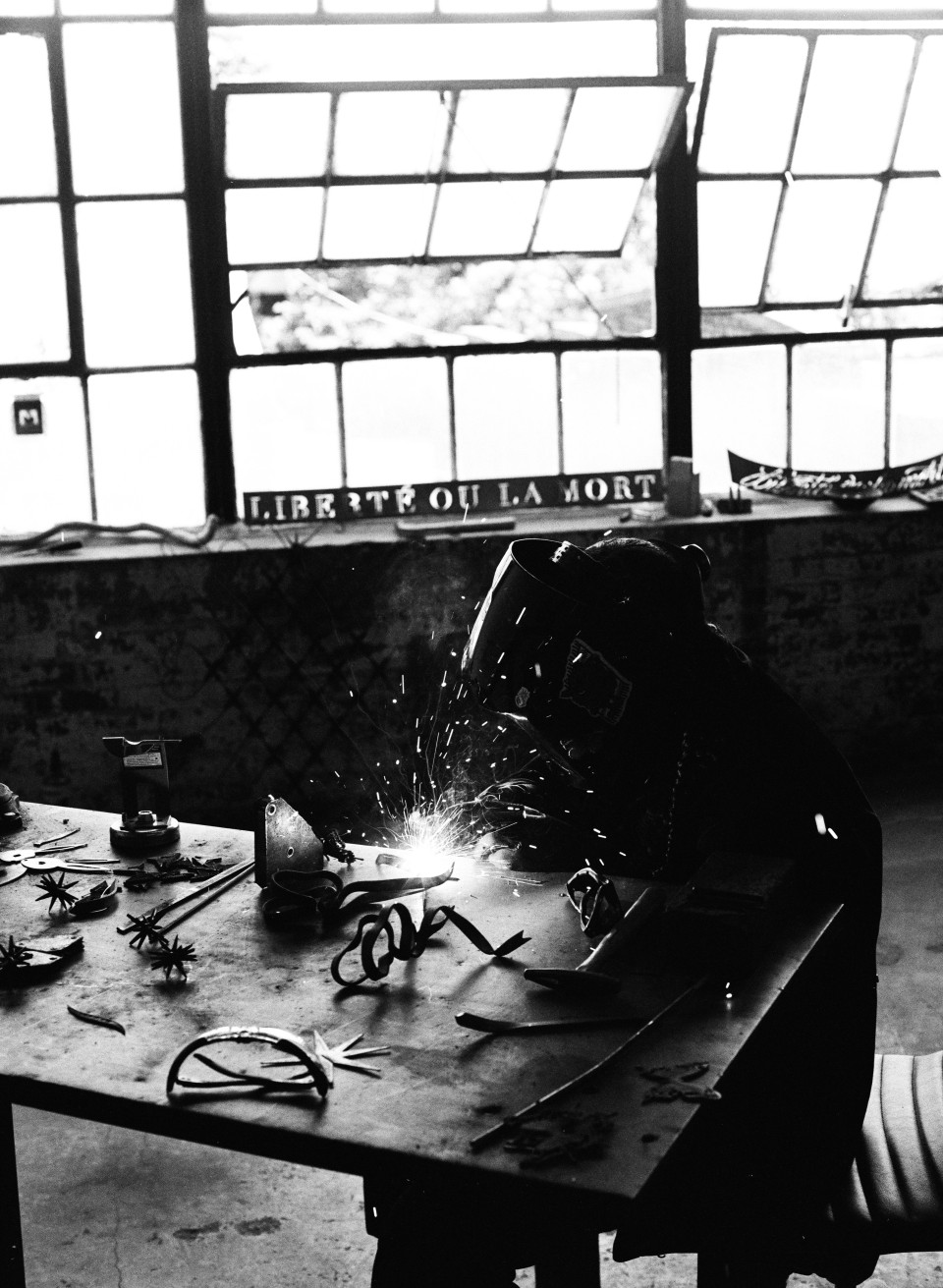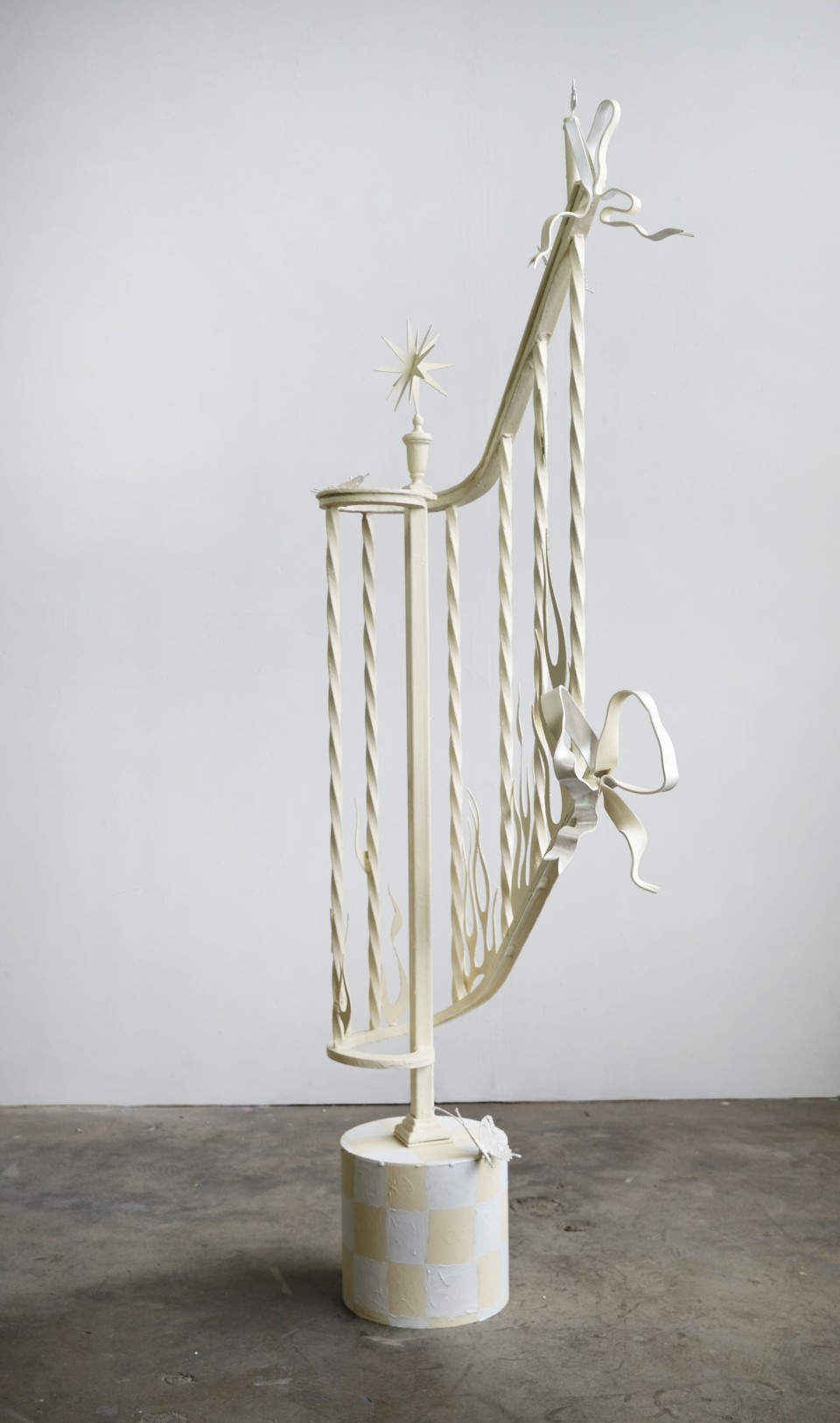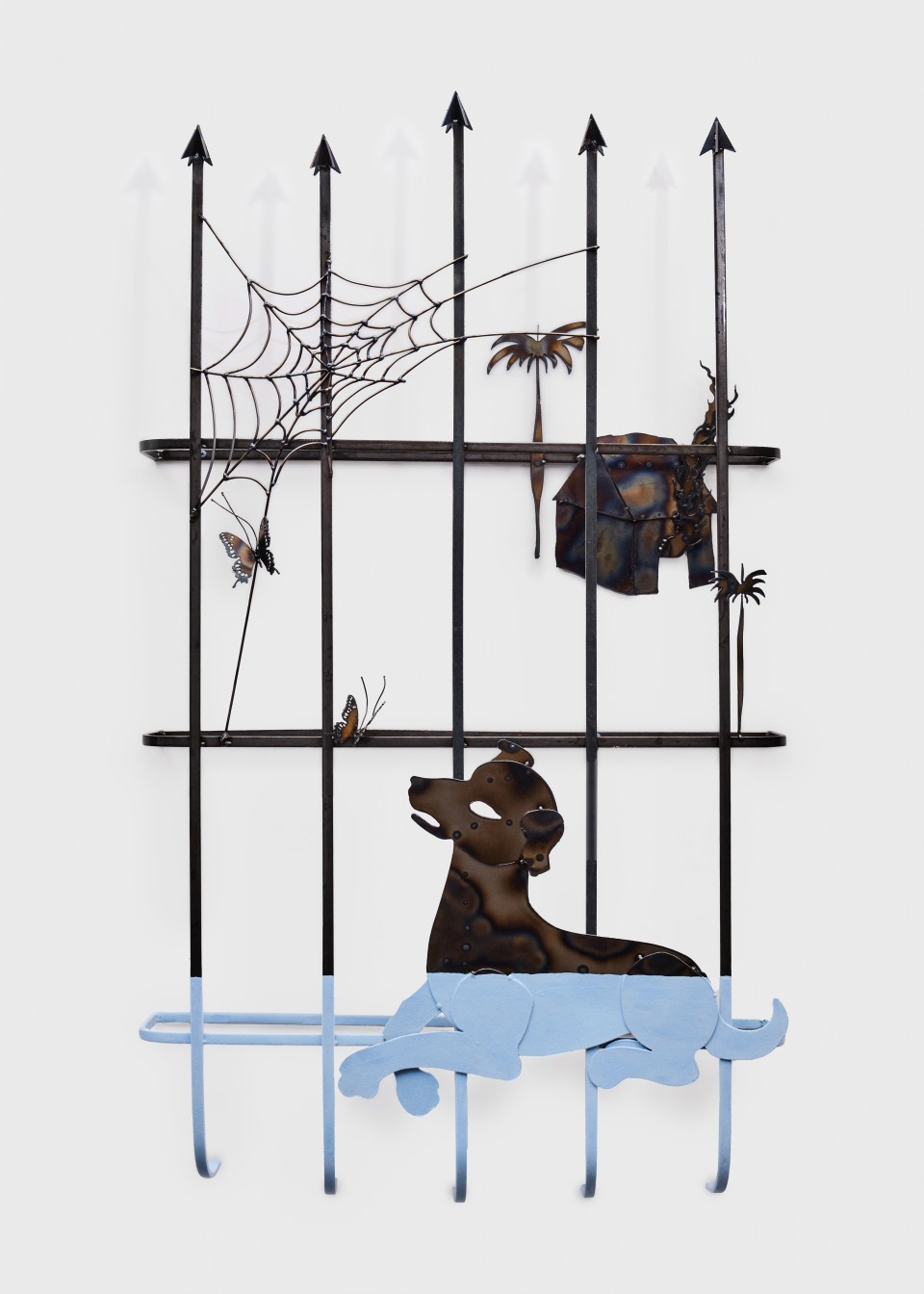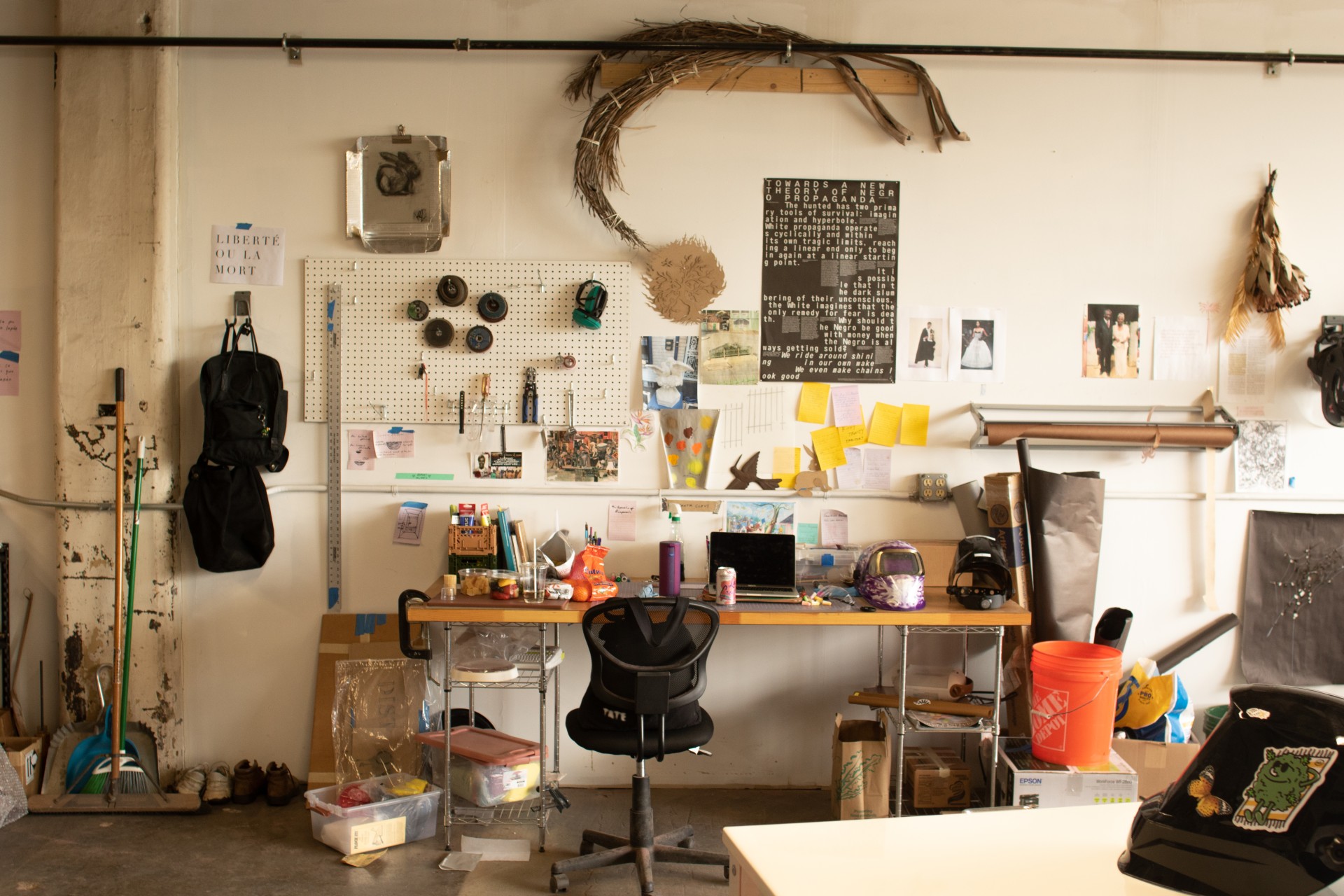There, you can picture them drawing with iron, steel, and bronze; taking beeswax, soap, cocoa and shea butters, adding chicken foot and sea salt, and manipulating these materials into playful and rousing architectural shapes culled from our domestic lives and memories.
Lucien is a Haitian American artist who works in sculpture, poetry, video, and sound to create breathtaking encounters caught between flight and suspension, buoyancy and stillness, in balmy and fantastical contradiction. An iron hair ribbon dancing on the banister of an imaginary staircase, a steel candle that burns infinitely at both ends, hibiscus flowers set in translucent resin breeze blocks, a butterfly landing on a wrought iron gate. Heat is a core property of Lucien’s practice. “Be it to melt or soften, cut or fuse, the exchange of heat is almost always a part of my process. Fire makes its way into the work both compositionally and chemically, taking on a symbolic role as destroyer and purifier,” they explain over email.
Informed by their upbringing in Cap-Haitien, Haiti, and Florida, Lucien calls on themes of nostalgia, memory, and magic, as it exists in the expansive Caribbean imaginary. Cap-Haitien retains an architectural and spiritual presence in Lucien’s work. The northern port city, with its citadels, cathedrals, and surrounding forests of Bois Caïman, was the site of the earliest Vodou rituals and tactical gatherings that precipitated the first major insurrection of the Haitian Revolution. Cap-Haitien is also home to the nearby Sans-Souci Palace, “built for a Black king, by Blacks barely out of slavery,”1 as the Haitian anthropologist Michel-Rolph Trouillot put it, a structure standing mostly in ruins now, on another bridge between the realms of what is and what could have been. Lucien’s practice addresses this yearning.
“My blood and spirit are tied to the land of Haïti,” Lucien remarks. “I believe there is a third space that we create in a longing for place. Mine is science fictional and dreamy, and exists under different laws of time. I approach this kind of thinking of home cautiously, as fantasy can be dangerous when overindulged. But I think there is something we can learn from changing the rules of our world to imagine new possibilities for the one that exists.”
For issue 006, Lucien invites us into their studio to learn more about their practice.
—Farrah Rahaman
